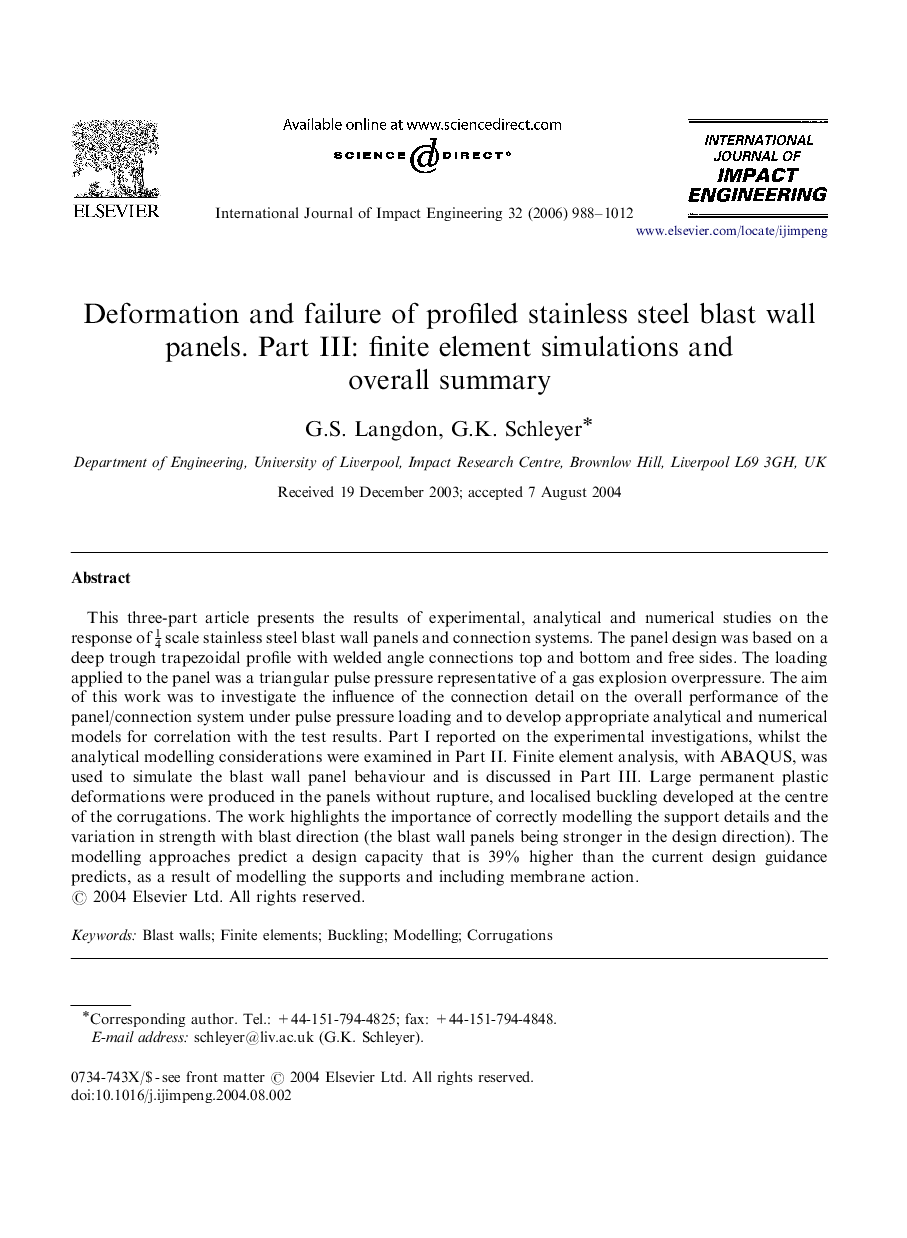| Article ID | Journal | Published Year | Pages | File Type |
|---|---|---|---|---|
| 779687 | International Journal of Impact Engineering | 2006 | 25 Pages |
This three-part article presents the results of experimental, analytical and numerical studies on the response of 14 scale stainless steel blast wall panels and connection systems. The panel design was based on a deep trough trapezoidal profile with welded angle connections top and bottom and free sides. The loading applied to the panel was a triangular pulse pressure representative of a gas explosion overpressure. The aim of this work was to investigate the influence of the connection detail on the overall performance of the panel/connection system under pulse pressure loading and to develop appropriate analytical and numerical models for correlation with the test results. Part I reported on the experimental investigations, whilst the analytical modelling considerations were examined in Part II. Finite element analysis, with ABAQUS, was used to simulate the blast wall panel behaviour and is discussed in Part III. Large permanent plastic deformations were produced in the panels without rupture, and localised buckling developed at the centre of the corrugations. The work highlights the importance of correctly modelling the support details and the variation in strength with blast direction (the blast wall panels being stronger in the design direction). The modelling approaches predict a design capacity that is 39% higher than the current design guidance predicts, as a result of modelling the supports and including membrane action.
